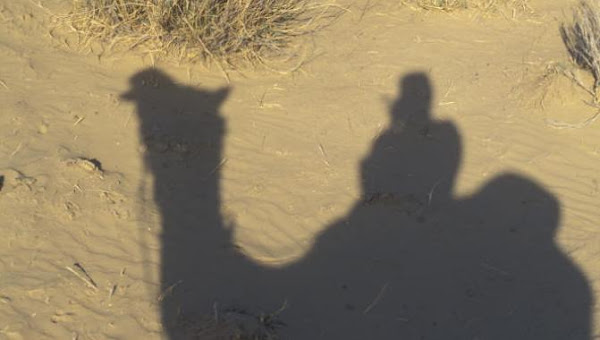(Note: Varanasi has so many facets to it, you are often left wondering- how does one describe one of the oldest and holiest cities on Planet Earth. Some things remain constant, Varanasi and the River Ganga are inextricably linked, one cannot be imagined without the other. The rituals connected with the cycle of life and death is performed at the bathing and burning ghats, lining the river bank, almost continuously. It is mentioned that the flame at the Manikarnika and Harishchandra cremation platforms are never doused, because there is a cremation taking place at any given point of time. A bewildered look on the face of many a tourist during the early morning boat ride alongside the river bank as they watch rituals being enacted will probably stay on forever, the same can be said of pilgrims wishing to take the holy dip at the touch of dawn. Mendicants and sadhus can be found in and around the river banks as well as in the lanes and by-lanes of a vastly confusing complex, while the common man and the residents of this amazing city carry on with their lives in an unfazed manner. It is almost impossible to provide an accurate description, the least one could do is to provide an impression.)
A sea of humanity stood in front of us, the milling crowds never seeming to cease. How could they? Our tourist bus stood next to the main railway station in Varanasi , the junction for hurried goodbyes and warm embracing welcomes; quite naturally the crowds didn't seem to diminish. While many departed and many arrived, our bus was caught in a mega traffic jam, consisting of four wheelers, two wheelers, and anything that would move! The bus inched forward, after an unseemingly long wait we reached the grand trunk road, one of India 's most renowned highways. We were on our way to visit a monument which is rarely visited by many tourists, the former residence of the Maharaja of Varanasi, Ramnagar Fort. As luck would have it, we caught a spectacular sunset from the fort rampart. In front of us was the placid and dusty colored River Ganga following its lazy course; in the distance the sun had painted the sky amber. Boats were rare and few, when they came into view it served a gentle reminder of life in the slow lane. The boatman or pilot, gently guided his boat with a long oar, while fellow assengers observed the happenings in studious silence. Once in a while a non descript ferry boat would come under the gaze of the setting sun, 'twas time for a picture perfect moment to be captured on our digitals. In an instant the hardships of our journey were soon forgotten and all forgiven. This is the case on many sojourns across India , ours was no different.
The Ramnagar Fort was the former residence of the Maharaja of Varanasi, though we didn't get to see him, we did see some of his attendants guarding the museum consisting of armaments, costumes, and many items needing preservation under a sheet of glass. I kept thinking about the fort with its stunning location, and whether it would soon become part of a hotel chain resort in the future - just like the palaces and havelis of Rajasthan. The ride back to main city was no different, though on this occasion we were privy to marriage processions along the way. Our presence in Varanasi was on an auspicious day, a time when many marriages are solemnized; it came as no wonder we came across numerous ceremonies and processions during our stay. Marriages are made in heaven (I beg to differ) they are made and celebrated at Varanasi ! Speaking about the word marriage, the name Varanasi is also a 'marriage' of two words, Varuna a River to the north, and Assi a stream of a flowing river to the south. Benaras is yet another name for the magnanimous city, while many Hindus refer to it as Kashi (the city of lights). Revered as one the seven most sacred sites of Hinduism, Varanasi finds mention in the Ramayana as well as Mahabharata and was visited by Buddha in 500 B.C. The centre for education, learning, art and culture was plundered by Mahmud of Ghazni in 1033, while Alaudin Khilji tore down temples and replaced them with mosques during his reign of Delhi from 1294-1316. Jain followers descended, mainly because three 'tirthankars’ were born here. Over a period of time, Varanasi gained prominence as a spiritual city and the abode of pilgrimages. The Panch Kosi (meeting of rivers) road is considered the holiest stretch, this stretch running in a wide arc and including some of the most well known ghats/step wells along the river Ganga is where some devout Hindus come to spend their last days of their lives. It is believed, one can escape the cycle of rebirth should death occur in the city’s holiest parts.
The sound of hurried footsteps is what I distinctly remember when we arrived at the Dasasvamedha Ghat early next morning for our boat ride across the river. As dawn had not yet set in, faces were hard to decipher. Many followers stopped at wayside stalls to buy flower garlands, light lamps and incense sticks, while we (tourists) scurried past to our waiting boats. Bathing alongside this landing place is considered propitious. We passed by a number of such landing places, each holds its own significance. At Man Mandir you can see the well restored palace of Maharaja Man Singh of Amber, while the Dom Rajas belongs to the patron who oversees the cremation activities at the cremation grounds. The entire process beginning with dressing of the corpse, the ritual bathing, the actual cremation and the final act of gathering the ash into the urns is undertaken by the employees of Dom Raja, who are lower end hierarchy in the Indian caste system. We were to learn from our guide that 'master of cremations’ is one of the wealthiest persons living in Varanasi . Who would dispute this?
Widows are fed and clothed at Mir Ghat, while the Tulsi Ghat commemorates the saint-poet Tulsi Das. It was at Harishchandra Ghat we turned around, not before witnessing flames rising in the air from burning pyres. Silence descended as we tried to capture the reality of death and the ease with which the transition takes place. While dawn offered us numerous surprises, evening ride was magnificent because it provided us an opportunity of watching a stunning, vedic chanting ceremony by young hindu priests at the Dasashvamedha Ghat. It was an electrifying experience, to this day the sights and sound of the gongs and the chants remain clearly entrenched in memory.
The magic of Varanasi can never be desciribed in words, it needs more than a single visit. You will either return back truly inspired and come back with ten others, or decide, once is enough.









No comments:
Post a Comment